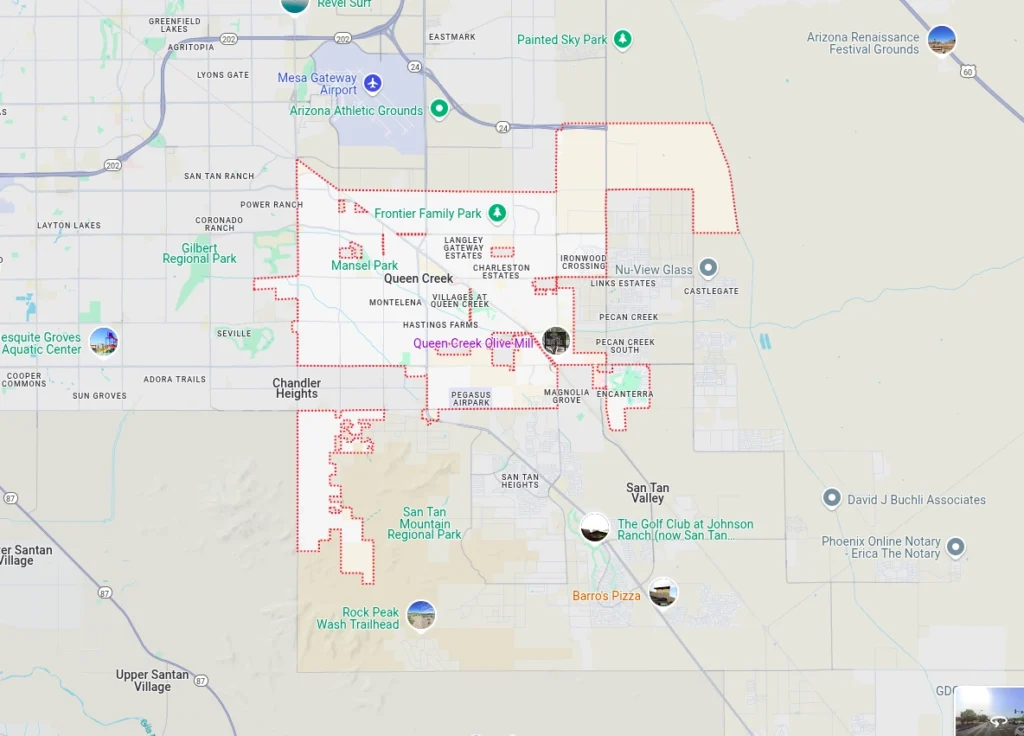More Information
Reach out for expert insurance support and personalized solutions.
Call Us!
855-822-5334
Our Location
Get Your Free Quote
Find affordable coverage tailored to your needs. See how much you could save today!

Medicare Prescription Drug Plans, also known as Part D, provide essential coverage for prescription medications that Original Medicare alone doesn’t cover. These specialized insurance plans help reduce your prescription drug costs, ensure access to necessary medications, and provide protection against high pharmacy expenses, giving you greater peace of mind about your medication needs.
In Queen Creek, San Tan Valley, and throughout Arizona, finding the right Prescription Drug Plan requires understanding your specific medication needs and exploring various plan options while comparing formularies and pharmacy networks. Our local expertise helps Medicare beneficiaries discover Part D coverage that balances comprehensive protection with affordability while ensuring access to your essential medications.
Why Choose Us for Your Prescription Drug Plan (Part D) Guidance
Selecting the right Medicare Part D Plan involves navigating numerous options, formulary lists, and pharmacy networks. Our Health Insurance Jedi team in Queen Creek and San Tan Valley simplifies this process with expert guidance and personalized service focused on finding you the right prescription drug coverage.
1. Medicare Part D Expertise
We understand that Prescription Drug Plans have unique features and varying formularies different from other Medicare options. Our team helps you evaluate plans based on your specific medication needs, including current prescriptions, pharmacy preferences, and budget considerations. We explain Part D options clearly without confusing jargon, ensuring you understand exactly how each plan covers your medications.
2. Local Pharmacy Network Knowledge
As Arizona residents ourselves living in Queen Creek and San Tan Valley, we know the local Medicare Part D landscape thoroughly. We can guide you through which plans work with your preferred local pharmacies, which ones offer mail-order savings, and how to maximize your prescription benefits with Arizona providers. This local insight ensures your Part D plan truly works for your medication needs in our community.
3. Continuous Medicare Part D Support
Our service relationship extends well beyond enrollment. As your medication needs evolve, we provide ongoing support for formulary questions, pharmacy issues, coverage concerns, and helping you review your plan annually during the Medicare Annual Enrollment Period to ensure it continues to cover your prescriptions effectively.
4. Customized Part D Solutions
Prescription Drug Plan guidance through our agency gives you flexibility to select the plan that best fits your specific medication regimen and budget. Whether you're newly eligible for Medicare or considering switching your current drug plan, we help you find options that address your particular medication needs and preferences.
5. Streamlined Part D Enrollment
Our efficient application process makes obtaining Medicare Part D coverage straightforward and stress-free. We guide you through eligibility requirements, help with application completion, and ensure you understand how to use your new prescription benefits without unnecessary confusion during this important transition.
6. Round-the-Clock Medicare Part D Assistance
Questions about your Prescription Drug Plan don't follow standard hours, and neither do we. Our support team remains available whenever you need help understanding your coverage, resolving pharmacy issues, or addressing urgent questions about your medication benefits.
Fast & Easy Process
Our streamlined application process minimizes paperwork and confusion. We handle the technical details while keeping you informed at every step, ensuring quick policy setup without unnecessary delays.
24/7 Supports
Access our support team whenever you need assistance. Whether you have questions about coverage, need help with claims, or want to understand your benefits better, we're here to help around the clock.
Understanding Medicare Prescription Drug Plans (Part D)
Medicare Part D provides insurance coverage specifically for prescription medications. These plans are offered by private insurance companies approved by Medicare and work alongside your Original Medicare or Medicare Supplement coverage to help pay for both brand-name and generic prescription drugs.
- Affordable Plans
- Local Expertise
- Personal Guidance

Key Features of Medicare Part D Plans
- Prescription-specific coverage: Focuses exclusively on medication costs
- Standalone option: Can be purchased separately from other Medicare coverage
- Formulary-based benefits: Covers medications listed in the plan’s drug list
- Pharmacy networks: Features preferred pharmacies for maximum savings
- Annual contract: Plans renew yearly with potential formulary changes
- Standard benefit structure: Following Medicare’s design with some variations
What Medicare Part D Plans Cover
Medicare Prescription Drug Plans provide comprehensive medication coverage:
Medication Types Covered
- Brand-name prescription drugs
- Generic medications
- Specialty medications and biologics
- Many preventive vaccines
- Drugs across various therapeutic classes
- Medications for acute and chronic conditions
Formulary Tiers and Categories Drugs are typically organized in tiers:
- Generic medications in lower tiers
- Preferred brand-name drugs
- Non-preferred brand-name drugs
- Specialty tier medications
- Injectable medications
- Coverage for most commonly prescribed drugs
Coverage Requirements Medicare Part D plans must cover:
- At least two drugs in each therapeutic category
- All or substantially all drugs in six protected classes
- Medications for mental health conditions
- HIV/AIDS treatments
- Cancer drugs
- Immunosuppressants
Types of Prescription Drug Coverage Options
Medicare beneficiaries have different ways to access prescription drug coverage:
Medicare Part D Plan Options
Standalone Prescription Drug Plans (PDPs) These plans work with Original Medicare:
- Pair with Original Medicare Parts A and B
- Compatible with Medicare Supplement Plans
- Focus exclusively on prescription coverage
- Various premium levels and coverage designs
- Nationwide availability with regional variations
- Good option for those with Original Medicare
Medicare Advantage Prescription Drug Plans (MA-PDs) Many Medicare Advantage Plans include:
- Integrated medical and prescription coverage
- Single insurance card for all services
- Coordinated care between medical and pharmacy benefits
- Provider network and pharmacy network coordination
- Unified customer service for all healthcare needs
- All-in-one coverage alternative
Special Coverage Situations Additional options for specific circumstances:
- Employer or union drug coverage
- Veterans Affairs (VA) prescription benefits
- TRICARE prescription coverage
- Program of All-inclusive Care for the Elderly (PACE)
- AIDS Drug Assistance Programs
- State Pharmaceutical Assistance Programs
Plan Comparison Considerations
When evaluating Prescription Drug Plans, consider:
- Your specific medications and their coverage status
- Preferred pharmacy network participation
- Mail-order pharmacy options and savings
- Formulary restrictions and requirements
- Overall premium and cost-sharing structure
- Star rating quality measures
Medicare Part D Enrollment Guidelines
Understanding when and how to enroll in Prescription Drug Plans is essential:
Initial Enrollment Opportunities
Initial Enrollment Period (IEP) This first enrollment window includes:
- Seven-month period around your 65th birthday
- Starts 3 months before your birthday month
- Includes your birthday month
- Extends 3 months after your birthday month
- Best time to enroll to avoid late enrollment penalties
- Special timing for disability-related Medicare eligibility
Annual Enrollment Period (AEP) Every year from October 15 to December 7:
- Switch between Part D Plans
- Join a Part D Plan if you don’t have one
- Drop your Part D coverage
- Change from a Medicare Advantage Plan to Original Medicare with Part D
- Review and compare plan options annually
- Changes become effective January 1
Special Enrollment Periods
Special situations creating Part D enrollment rights:
- Moving to a new address outside your plan’s service area
- Losing creditable prescription drug coverage
- Plan leaving the Medicare program
- Qualifying for Extra Help with Medicare costs
- Moving into, residing in, or leaving a long-term care facility
- Qualifying for Medicaid coverage
- 5-star Special Enrollment Period opportunities
Late Enrollment Penalty Considerations
Understanding potential penalties:
- Importance of enrolling when first eligible
- Definition of creditable prescription drug coverage
- Penalty calculation methodology
- Lifetime nature of Part D penalties
- Exceptions to penalty assessments
- Documentation for creditable coverage periods
Family Copayments
A copayment is a fixed amount your family pays for specific services, such as doctor visits or prescriptions. Each family member might have different copay amounts depending on age, service type, and other factors.
Understanding the Part D Drug Formulary
The formulary is the heart of your Part D plan’s coverage
Formulary Basics
Essential aspects of Part D drug lists:
- List of covered prescription medications
- Tier structure determining cost-sharing levels
- Regular updates and possible changes
- Generic and brand-name options
- Therapeutic categories and classes
- Plan-specific coverage exceptions
Formulary Restrictions and Rules
Common management tools include:
- Prior authorization requirements
- Quantity limits on certain medications
- Step therapy protocols requiring trial of certain drugs first
- Therapeutic substitution options
- Formulary exception processes
- Non-formulary medication procedures
Specialty Medication Coverage
Handling high-cost, complex medications:
- Specialty tier designation and cost-sharing
- Limited distribution drugs
- Specialty pharmacy requirements
- Administration method considerations
- Clinical management programs
- Manufacturer support programs
Choosing the Right Prescription Drug Plan
Selecting appropriate Part D coverage requires evaluating several factors:
Assess Your Medication Needs
Consider your prescription situation:
- Current prescription medications
- Dosages and frequency of medications
- Brand-name versus generic preferences
- Anticipated medication changes
- Specialized medication requirements
- Chronic condition management drugs
Evaluate Pharmacy Networks
Part D pharmacy considerations:
- Preferred versus standard network pharmacies
- Proximity of network pharmacies to your home
- Mail-order pharmacy options and requirements
- Specialty pharmacy access if needed
- Out-of-network coverage limitations
- Travel considerations and national pharmacy chains
Compare Formulary Coverage
Medication list evaluation:
- Confirmation your drugs are on the formulary
- Tier placement of your medications
- Prior authorization or other restrictions
- Quantity limitations
- Generic alternatives availability
- Formulary exception process
Consider Overall Value
Look beyond the premium:
- Annual deductible amount and application
- Copayment or coinsurance for your specific drugs
- Coverage gap provisions
- Catastrophic coverage protection
- Customer service quality
- Convenience features like automatic refills
Understanding the Part D Coverage Stages
Prescription Drug Plans have a standardized benefit structure:
Annual Deductible Stage
The first phase of coverage:
- Plan-specific deductible amounts
- Some plans cover certain tiers before deductible
- Applying only to covered prescriptions
- Resets annually on January 1
- Payment responsibility before plan begins to pay
- Deductible variations between plans
Initial Coverage Stage
After meeting your deductible:
- Copayment or coinsurance for covered drugs
- Tier-based cost-sharing for medications
- Calculation of total drug costs
- Tracking toward coverage gap entry
- Cost differences between pharmacy types
- Benefit period through calendar year
Coverage Gap Stage
Commonly known as the “donut hole”:
- Understanding discounts and coverage during this stage
- Manufacturer discounts on brand-name drugs
- Generic drug coverage in the gap
- Progressive closure under Medicare reforms
- Tracking out-of-pocket spending
- Movement toward catastrophic coverage
Catastrophic Coverage Stage
Final stage of Part D benefit:
- Lower cost-sharing after reaching threshold
- Significant cost protection for high medication expenses
- Coverage through the end of calendar year
- Resets annually on January 1
- Essential protection for those with high drug costs
- Automatic qualification process
Medication Management Strategies
Maximizing your Part D benefits requires strategic approaches:
Cost-Saving Approaches
Reducing medication expenses:
- Generic substitution opportunities
- Therapeutic alternatives in lower tiers
- Mail-order pharmacy savings
- Preferred pharmacy network utilization
- Manufacturer assistance programs
- Medication synchronization benefits
Medication Therapy Management
Programs to optimize medication use:
- Comprehensive medication reviews
- Action plans for medication issues
- Medication-related problem resolution
- Personalized medication record creation
- Coordination between healthcare providers
- Educational resources and counseling
Formulary Exceptions and Appeals
When you need non-covered medications:
- Exception request procedures
- Medical necessity documentation
- Tiering exception requests
- Prior authorization process navigation
- Appeal rights for denials
- Multi-level appeal options
Extra Help for Prescription Drug Costs
Financial assistance programs can reduce Part D expenses:
Extra Help Program (Low-Income Subsidy)
Medicare’s assistance program:
- Premium assistance benefits
- Reduced deductibles and copayments
- Modified coverage gap provisions
- Application process through Social Security
- Automatic qualification situations
- Annual eligibility redetermination
State Pharmaceutical Assistance Programs
State-specific help:
- Arizona program availability and eligibility
- Coordination with Medicare Part D benefits
- Application procedures and documentation
- Additional cost-sharing reductions
- Eligibility criteria and coverage levels
- Supplemental benefits to Part D
Manufacturer Patient Assistance Programs
Direct help from drug companies:
- Programs for brand-name medications
- Eligibility requirements and application process
- Coordination with Part D benefits
- Potential premium and copayment assistance
- Disease-specific assistance programs
- Transitions between assistance programs
Annual Plan Review and Changes
Prescription Drug Plans can change yearly:
Annual Notice of Change
Understanding plan modifications:
- Review Annual Notice of Change document each September
- Identify formulary changes affecting your medications
- Note pharmacy network adjustments
- Recognize premium and cost-sharing alterations
- Evaluate if current plan remains the best option
- Make informed decisions during Annual Enrollment
Annual Plan Comparison
Regular evaluation of options:
- Review current medication list completely
- Compare available plans in your area
- Check formulary coverage for your specific drugs
- Assess pharmacy network changes
- Compare overall costs based on your usage
- Consider convenience features and star ratings
FAQS
Frequently Asked Questions About Medicare Part D Plans
Medicare Part D is voluntary, but there are important considerations. If you don't have Part D or other creditable prescription drug coverage when first eligible, you may face a late enrollment penalty if you join later. This penalty adds to your premium for as long as you have Part D. Even if you don't currently take medications, having coverage protects you from unexpected future costs and penalties.
Formulary tiers determine how much you pay for different medications. Typically, lower tiers include generic drugs with lower copayments, while higher tiers include brand-name and specialty drugs with higher costs. A common structure includes Tier 1 for preferred generics, Tier 2 for non-preferred generics, Tier 3 for preferred brand-name drugs, Tier 4 for non-preferred brand-name drugs, and Tier 5 for specialty medications. Understanding your medications' tier placement helps predict your costs.
If your medication isn't covered, you have several options. You can request a formulary exception where your doctor explains why you need this specific drug. Your plan may approve coverage based on medical necessity. Alternatively, you can discuss therapeutic alternatives with your doctor or pharmacist – medications in the same class that are covered by your plan. During Annual Enrollment, you can also switch to a plan that covers your medication.
Many Part D plans offer mail-order pharmacy services that can provide convenience and cost savings. Typically, you can receive a 90-day supply of maintenance medications delivered to your home. This often costs less than getting the same medications monthly at retail pharmacies. Mail-order services usually include automatic refill options, pharmacist consultations by phone, and online ordering tools. They work especially well for medications you take regularly.
Generally, no. If you join a Medicare Advantage Plan that includes prescription drug coverage (MA-PD), you already have Part D benefits and cannot enroll in a separate standalone plan. If you're in a Medicare Advantage Plan without drug coverage (rare), you can sometimes add a standalone Part D plan. If you have Original Medicare, you can and should enroll in a standalone Part D plan for prescription coverage.
Part D plans can make formulary changes during the year, but they must follow Medicare rules. If a plan removes a drug, moves it to a higher cost tier, or adds restrictions, it must provide written notice at least 30 days before the change. You'll typically be able to get a temporary supply during the notice period. Your doctor can request an exception, or you may qualify for a Special Enrollment Period to switch plans if the change significantly impacts your treatment.
Part D plans have specific pharmacy networks, which may impact coverage when traveling. Most national plans include major pharmacy chains throughout the U.S., allowing you to fill prescriptions while traveling domestically. Before traveling, check if there are in-network pharmacies at your destination. Consider getting vacation overrides for extended trips or using mail-order options. For international travel, Part D generally doesn't cover medications purchased outside the U.S., so plan accordingly.
The most effective way to compare plans is based on your specific medications. Make a complete list of your prescriptions, including dosages and frequency. Use Medicare's Plan Finder tool or get assistance from our experienced agents to compare how each plan covers your drugs, what pharmacies you can use, and your estimated annual costs. Consider both premium and out-of-pocket costs, as the lowest premium plan isn't always the most affordable overall.
If you enter a skilled nursing facility or hospital, your Part D plan still covers your prescribed medications. However, if you're in a skilled nursing facility receiving Medicare Part A benefits, some medications may be covered under Part A instead of Part D. Once your Part A skilled nursing coverage ends, all prescribed medications would be covered by your Part D plan again, subject to your plan's formulary and cost-sharing requirements.
You can change your Part D plan during the Annual Enrollment Period (October 15-December 7) for coverage starting January 1. If you're enrolled in a Medicare Advantage Plan with drug coverage, you can also make changes during the Medicare Advantage Open Enrollment Period (January 1-March 31). Additionally, certain life events may qualify you for a Special Enrollment Period to make changes outside these times, such as moving outside your plan's service area or losing other drug coverage.

Take the Next Step for Your Prescription Drug Plan
Finding the right Medicare Part D Plan provides essential protection against prescription medication costs and ensures access to the drugs you need. Our local team in Queen Creek and San Tan Valley specializes in guiding Medicare beneficiaries through their prescription drug coverage options. We provide:
- Free Part D consultations and comparisons
- Personalized drug list evaluation
- Formulary verification for your specific medications
- Pharmacy network analysis
- Assistance with enrollment timing and applications
- Local expertise with Arizona Medicare Part D plans
Don’t navigate Medicare’s prescription drug complexities alone. Contact us today to explore your Part D options.
Call us at ☎️ +1 (855) 822-5334 or schedule a free consultation online.
Proudly Assisting
Our Service Area
The Health Insurance Jedi proudly serves Medicare beneficiaries seeking Prescription Drug Plans throughout:
- Queen Creek
- San Tan Valley
- Gilbert
- Chandler
- Apache Junction
- Florence
- Mesa
Our deep knowledge of Arizona’s Medicare Part D landscape and local pharmacy networks ensures you receive guidance that addresses your specific medication needs. Contact us today to discover how we can help secure your prescription drug coverage with the right Medicare Part D Plan for your situation.
